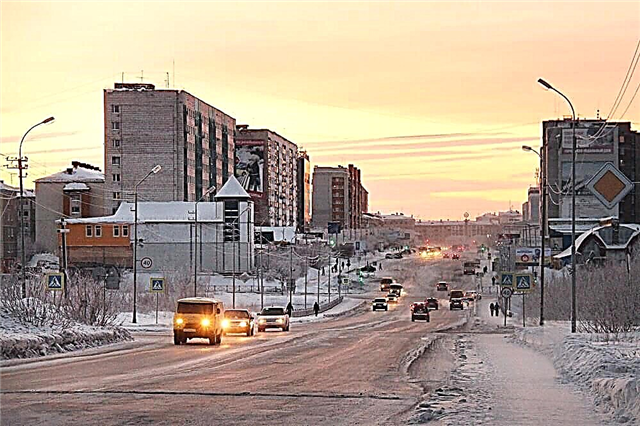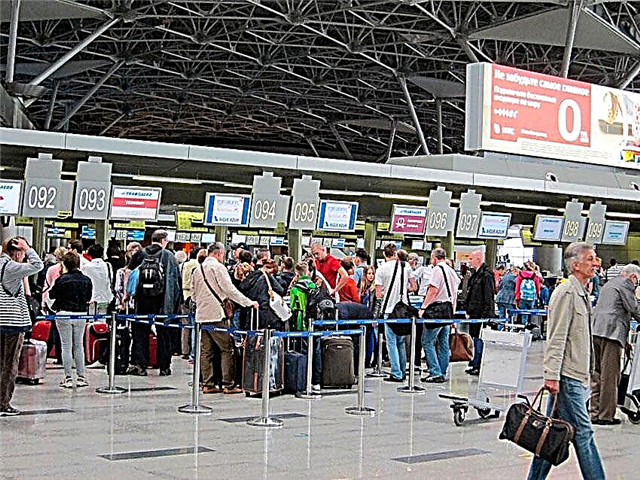How to check in for a plane? Upon arrival at the airport, the adventure of the traveler (especially the beginner) begins. Buying a ticket does not automatically make anyone a passenger, because in order to get into the aircraft cabin, you must observe all the nuances of check-in and boarding. Well, let's begin to analyze the procedure for passing control on the flight.
Arrival at the airport and check-in
You need to arrive at the terminal with enough time to safely go through the registration procedure and all other formalities. It is recommended to arrive 2 hours before departure for domestic flights and 3-4 hours for international flights. The route to the airport must be built in such a way that there are no unforeseen circumstances (for example, traffic jams) that can lead to delays. Check-in usually ends 40 minutes before boarding and passengers who have not made it by this time are not allowed on board. In addition, if you find yourself at the airport earlier (especially if your family or company is traveling), there are more chances to choose the places you like in the neighborhood while they are not yet occupied.
It is not necessary to queue for this procedure now. To get a boarding pass, sometimes it is enough just to print it in one of the terminals at the airport itself - you just need to clarify whether the selected airline has such a service. Many carriers allow the online check-in procedure - you can do it yourself, from home or on the road no earlier than a day before departure.
This method is, in principle, the most convenient - it significantly saves time, and on the spot you will only have to check in your luggage. After registering online, the passenger is sent a ticket in a letter, which will need to be printed at the terminals at the passport control and, if necessary, presented when checking in the baggage and boarding.

Baggage
Before leaving, you should carefully familiarize yourself with the rules for carrying hand luggage and baggage - each company has its own and can be very different, moreover, this will increase the chances of being checked in for the plane. This also applies to "inaccuracies" - some carriers allow a slight excess of the weight allowance for luggage and will safely let you on board with hand luggage slightly larger than stated, while others are strictly principled in this matter. When buying, you should immediately pay attention to what allowance for hand luggage and free baggage is implied by the ticket.
Depending on the class, it can be either 0 seats if the ticket is "basic", or 2 norms of 20 kg for tickets of the "comfort" class and higher. The weight of carry-on luggage usually does not exceed 8 kg, which means that it is quite acceptable to take a bag or a small suitcase with you. If there are doubts about the weight of the suitcases, they can be weighed right at the airport on special scales (sometimes even free of charge). They also often pack things in film, if it was not done at home. In the presence of non-standard baggage (carrying pets, strollers, sports equipment, etc.), you must study the details of its transportation with the airline.
Must-Read List - Prohibited Items. Each country and airline may have its own, if there are doubts about a particular item, it is better to contact the carrier in advance and clarify your question. Sharps and cutting objects, liquids, cosmetics, sweets and food, drugs unnecessary in flight - it is better to put everything in a suitcase, which will go to the luggage compartment. At the same time, it is not recommended to put money, documents, equipment, jewelry and fragile items, as well as food that can quickly spoil or spill.
All these actions significantly increase the chances of getting a check-in for the plane quickly. We go through the registration for the plane further and proceed to customs control, here you need to be very careful about this point.
Customs control
All passengers pass through the customs corridor - green or red. On the green corridor are those who do not carry with them taxable goods, and it takes very little time to pass. You can safely go there if with you:
- a sum of money up to 10 thousand US dollars and jewelry for an amount not exceeding 25 thousand US dollars;
- cigarettes - no more than 200 pieces;
- strong alcohol - no more than 1 liter.
Those who carry money or valuables in an amount higher than the specified one, as well as securities or personal goods that are prohibited from transportation (some types of medicines, for example) should go through the red corridor and fill out a customs declaration. The time of the procedure can be accelerated if you fill out the documents in advance by printing the appropriate form from the airport website. It does not hurt to study in advance the laws of the country to which or from which the flight is carried out and understand if there are any peculiarities of the export of certain types of goods / values.

Passport and pre-flight control
We go through the registration for the plane further. The process of passing the security control must be taken very carefully: during the inspection, remove all jewelry, watches, belts, pull out coins, keys and equipment from the pockets. It is advisable that there are no metal inserts on clothes and shoes - they can create additional problems when passing through the metal detector. There is no need to argue or joke with the security personnel - these people are on duty, and bickering and unnecessary conversations will only take up time.
Only those who travel outside the country go through passport control. Going on a long journey, you can leave anything at home except your passport (a frequent requirement - with a deadline no earlier than three months after the date of the intended trip). You need to take care of obtaining a visa in advance (if a visa regime has been established with the country of destination) and make sure that all the deadlines are entered correctly.
Well, that was the registration for the plane. It should also be remembered that when passing the border control after landing, the border service officers, before putting the coveted stamp on the document, may require you to provide an itinerary receipt for a return ticket, a route plan and information about the intended place of residence. As a rule, this is a formality, but it is better to keep the necessary documents in printed or electronic form with you.
Supplement to the article - How to check in for the plane?
I definitely recommend reading the material from my blog, links to articles below:
- How to get rid of the fear of flying (aerophobia)
- What to do at the airport
Now you know how to check-in for a plane and the whole procedure for going through flight control, be sure to share the material with your friends on social networks and subscribe to fresh articles from my blog.











